Vermont is known for its hot summer and cold winter, but what flowers will grow in such extremes? Let’s take a look at the best annual flowers for Vermont, when you can plant them out, and how much sunshine they need. Here are 14 flowers that love New England’s mild summer weather.
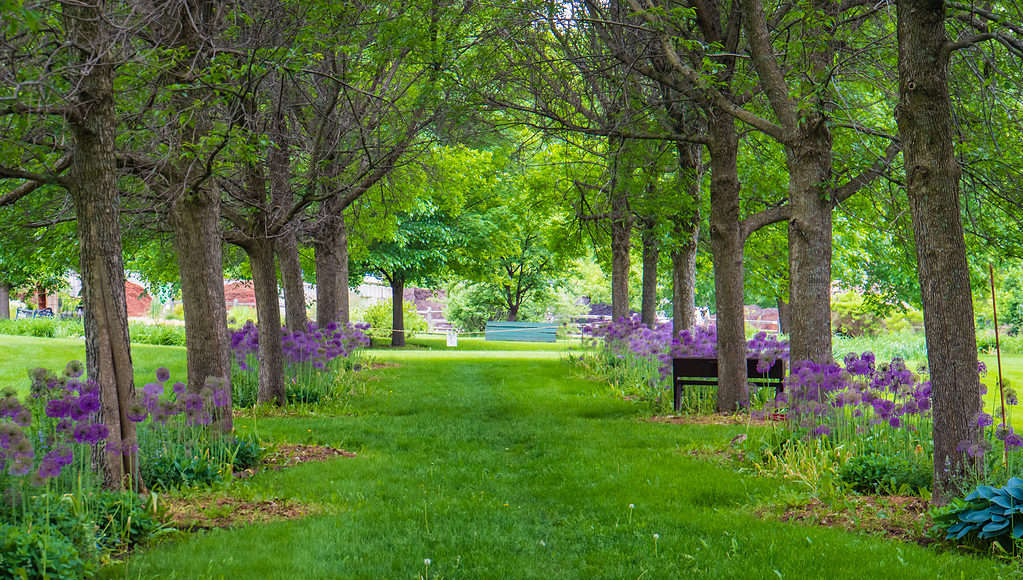
Vermont’s USDA growing zones range from 3b to 5b.
©iStock.com/vermontalm
Vermont’s USDA Growing Zones
Vermont’s five growing zones range from 3b through to 5b.
If you’re not familiar with these, it’s an indication of plant hardiness in your location. The higher the number, the warmer the weather. It’s based on the average extreme minimum temperature, so if you pick plants that suit the local growing zone, a beautiful, easy-care display is more likely.
The best annual flowers for Vermont shouldn’t go outside before early May because a late frost might kill them, and early October is often the latest date these flowers will bloom. However, if it’s a mild fall that brings later-than-average frost, you might see them last a few weeks longer.
Here are 14 of the best annual flowers for Vermont.
What’s an Annual?
Before we jump into our blooming gorgeous list, let’s just take a minute to make sure we all know what an annual plant is.
Annuals live for one year. They germinate during early spring, grow, flower, set seeds, and die in the space of a year, usually from March until October. Annual plants guarantee their species’ survival by producing thousands of seeds.
In contrast, perennial plants grow back each spring after winter dormancy. And biennials? Well, they germinate in late summer and go dormant for winter before finishing up their growing season the following year.
We’re looking at annuals in Vermont today, but in warmer southern climates, some of these blooms are perennials. It just doesn’t get cold enough in the South to kill them off.
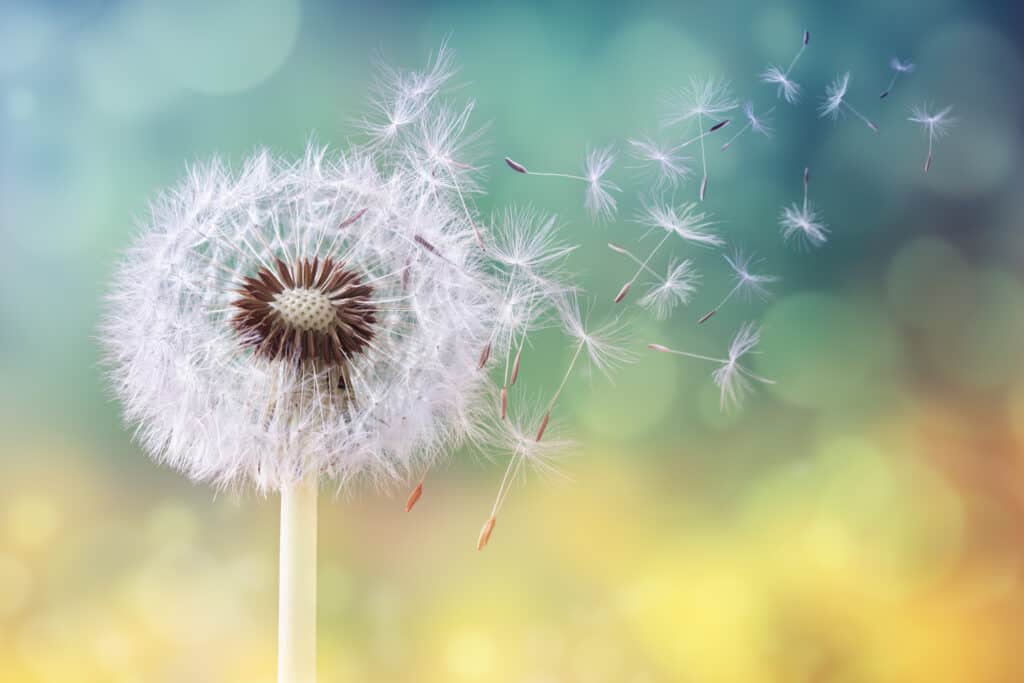
Annual plants die in winter, but produce seeds that flower the following summer.
©iStock.com/BrianAJackson
1. Petunia
Depending on the species, petunias reach 24-36 inches in height and spread. Their five-petalled trumpet flowers range from white to pink, red, purple, yellow, and black, plus speckled and striped versions. So many cultivars exist because popular petunias are bright and easy to grow.
These gorgeous annuals produce a sweet floral scent during the evening, which attracts pollinators and hummingbirds, so they’re great for biodiversity too.
Grow them from seed on a sunny window sill and plant them out when Vermont’s frosts have finished. Petunias can’t cope with frost! Choose a sunny or partially shaded spot and water them when the soil starts to dry out. Petunias are hungry and thirsty, so regular weekly fertilizer is necessary to keep the blooms coming until fall.

Petunias sweet evening fragrance attracts pollinators such as moths.
©iStock.com/skymoon13
2. Corn Poppy
Who doesn’t love a wild red poppy? Annual red corn poppies grow two to three feet from seed and develop stunning crinkled petals with such vivid colors you can’t stop looking.
Annual poppies (not oriental perennial cultivars) like sunshine and more sunshine, plus pretty poor soil. It’s always a surprise to see a glorious red poppy growing in dry chalk next to a sidewalk, but each to their own!
Sprinkle poppy seeds on weed-free soil in early spring and cover them so birds and cats can’t disturb the soil. They don’t require fertilizer, just occasional water in drought conditions.
After their stunning blooms have fallen, pepper-pot seed heads throw hundreds of seeds around the garden. If you don’t want self-seeded poppies, cut off the seed heads.

Annual corn poppies like poor soil and cope with drought.
©Yuriy Kulik/Shutterstock.com
3. Cornflowers
Sky blue cornflowers, sometimes called bachelor’s buttons, adorn a wildflower garden and attract many pollinator species, including bees, butterflies, and hoverflies. It was John F. Kennedy’s favorite flower, so we’re in exalted company here.
Hardy cornflowers grow pretty much anywhere outside, but seed them too early, and the frost will kill them off. The best time to plant cornflower in Vermont is early to mid-May. The frost has usually passed at this point, and there’s enough growing season left to produce bright blue blooms.
Cornflowers reach two feet tall, and they need full sun or light shade. They’ll refuse to flower in a gloomy spot, and who can blame them? This wildflower doesn’t need fertilizer, but during dry spells, a root soaking will perk them up.

Vivid blue cornflowers are called bachelor’s buttons.
©EQRoy/Shutterstock.com
4. Snapdragon
Frost-sensitive snapdragon is safe to plant outside in Vermont during late May.
This is a glorious annual flower that’s native to southern Europe. Its name comes from the intricate flowerheads that resemble a dragon’s jaws — if you squeeze gently on either side, the jaw moves up and down. Of course, this makes them a huge hit with children (and grown-up children!)
Snapdragons’ resilient nature makes them drought-hardy and love full sun. They’ll reach two to three feet tall in a sunny spot, but dwarf cultivars stay short at 6-8 inches. Their white, yellow, coral, pink, orange, and red flower heads create a dragon-like blaze of fiery color in the border or a large container, just be sure to water and feed container-grown plants regularly because they quickly use up available nutrients.
With regular fertilizer, weekly deadheading, and lots of sunshine, snapdragons grow in Vermont until the first frost.
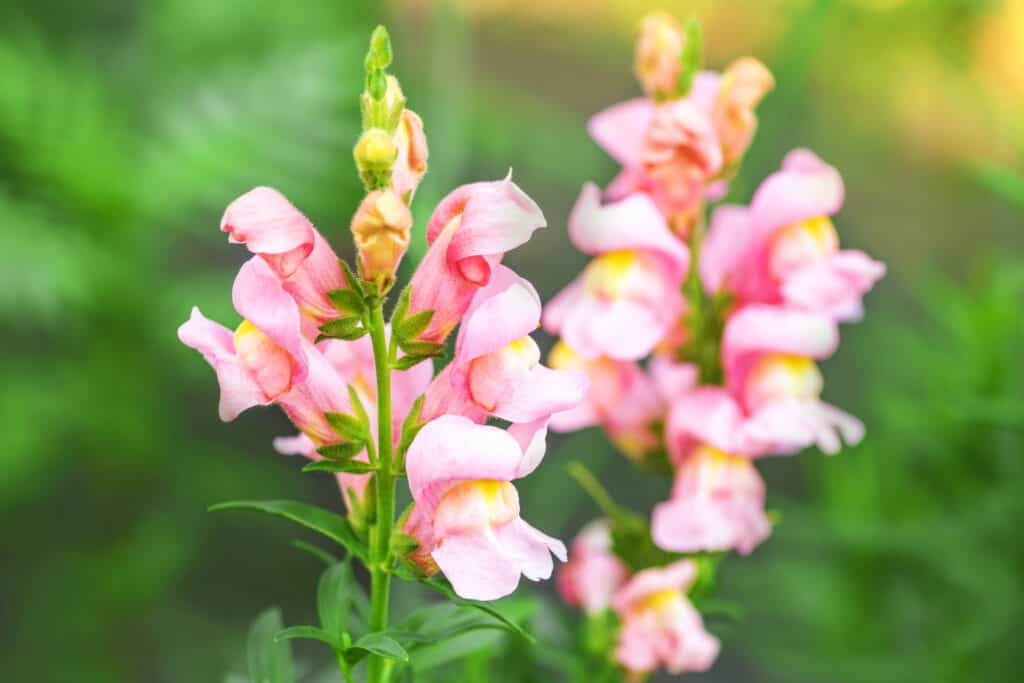
If you pinch a snapdragon’s bloom it opens to resemble a dragon’s jaws.
©iStock.com/Borislav
5. Sunflowers
Surely the most recognizable flower on planet Earth, the sunflower is a Vermont annual that grows from a ¼ inch seed to a towering ‘sun-on-a-pole’ over six months.
Germinate sunflower seeds on a bright windowsill in early spring, ready to plant them out in late May when the frost has vanished. Slugs and snails love sunflowers, so protect the bases with wool or eggshell and give them plenty of water. Sunflowers need regular water and fertilizer to reach such magnificent heights.
A sunny spot is essential; they struggle to grow in a shady spot. Did you know that sunflower heads move in line with the sun? You’ll see the flower heads track the day’s progress.
In fall, sunflower heads produce hundreds of seeds, which you can harvest for next year’s sunflower crop or leaves for squirrels and birds to enjoy.

Birds and squirrels enjoy a fall time sunflower seed harvest.
©Mark Alexander/ via Getty Images
6. Chrysanthemum
Annual red, lavender, orange, yellow, and white “mums” make a vibrant splash in Vermont’s late summer gardens and make refreshing tea too!
Mums originate from China, and there are hundreds of cultivars to pick from. Grow them from seed on a windowsill in early spring or buy small nursery plants in late spring when the frost has passed.
Mums need lots of sunshine, so choose a position in full sun for the best fiery display. Beef up soil with well-rotted organic matter first because lots of nutrients are vital to their health. Poor blooms appear in thin soil. Be sure to regularly water and feed container-grown mums because they struggle to bounce back from dry roots.
Some folks think that mums take more work than other annual flowers in Vermont, and perhaps there’s something in that because they do need lots of water and fertilizer. However, the resulting display is worth the extra effort.
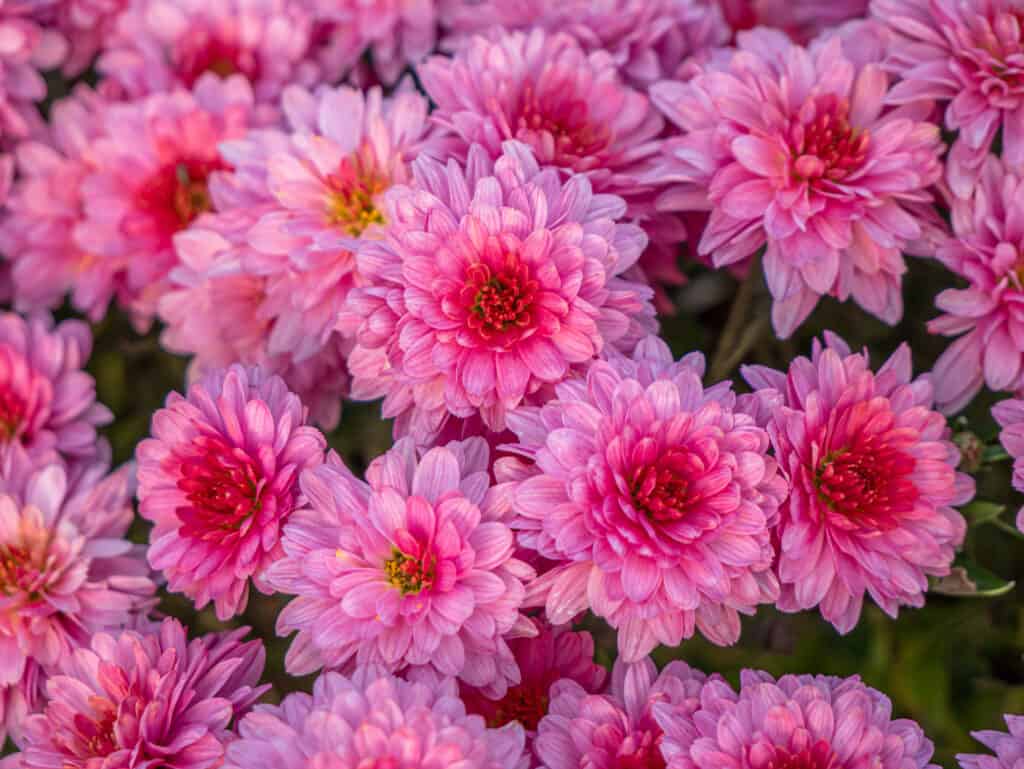
Vibrant chrysanthemum need regular water, but they blossom into late fall.
©Volodymyr Yakovyna/Shutterstock.com
7. Dahlia
Pretty sun-loving dahlia hail from Central and South America, so it’s no surprise they can’t cope with frost and need sunshine to flower well.
Plant dahlia tubers in the ground during late spring and keep them well watered. Shoots emerge soon after and reach two to four feet tall, generating incredible flower heads that attract endless pollinators. If you deadhead them regularly (cut blooms down to the first pair of leaves), more glorious flowers emerge to take their place.
When fall arrives, dig up the tubers and store them somewhere dark and dry. Subtropical dahlias can’t survive a Vermont winter, but they’ll happily wait it out somewhere dry until the sun returns.
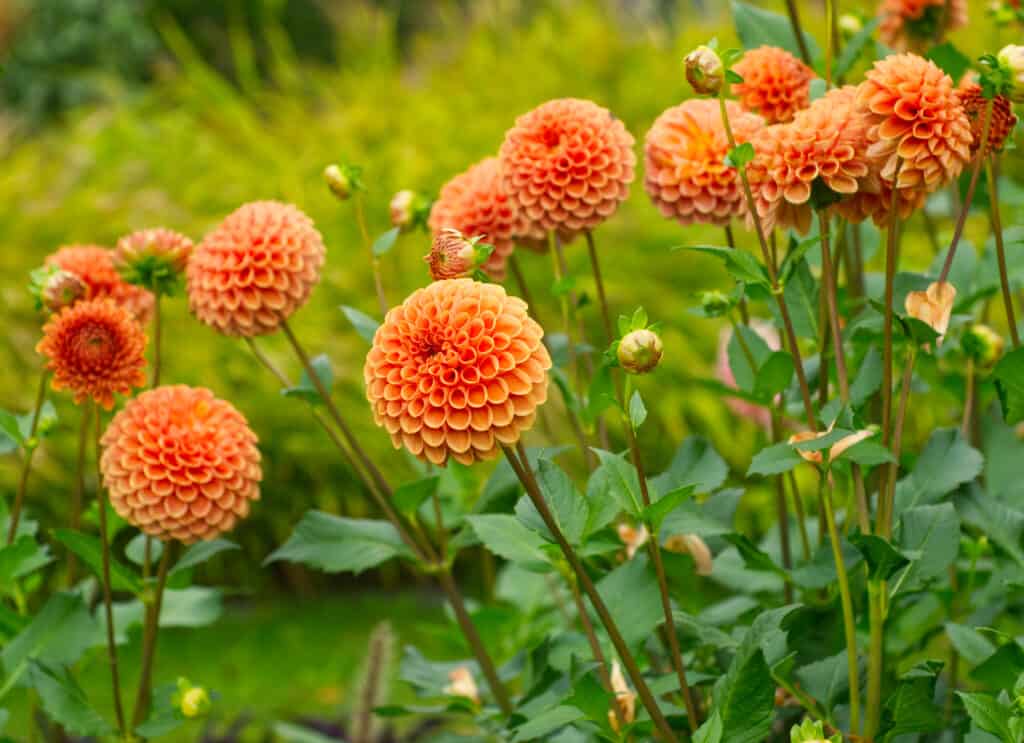
Dahlias hail from tropical climates, so it’s best to dig up the tubers each winter.
©Sve_M/Shutterstock.com
8. Zinnia
Colorful, regimental zinnias easily grow from seed on a sunny windowsill, and once the frosts have gone, they’re one of Vermont’s most colorful annual flowers.
Zinnias grow on a vertical stalk and produce one flower head per plant. They’re really fun to line a pathway. Space them six to eight inches apart for good air circulation in full sun or part shade, and keep them well watered.
Because they reach around a foot tall and produce relatively little foliage, you can grow shorter annuals like marigolds beneath them for a stunning pollinator buffet.
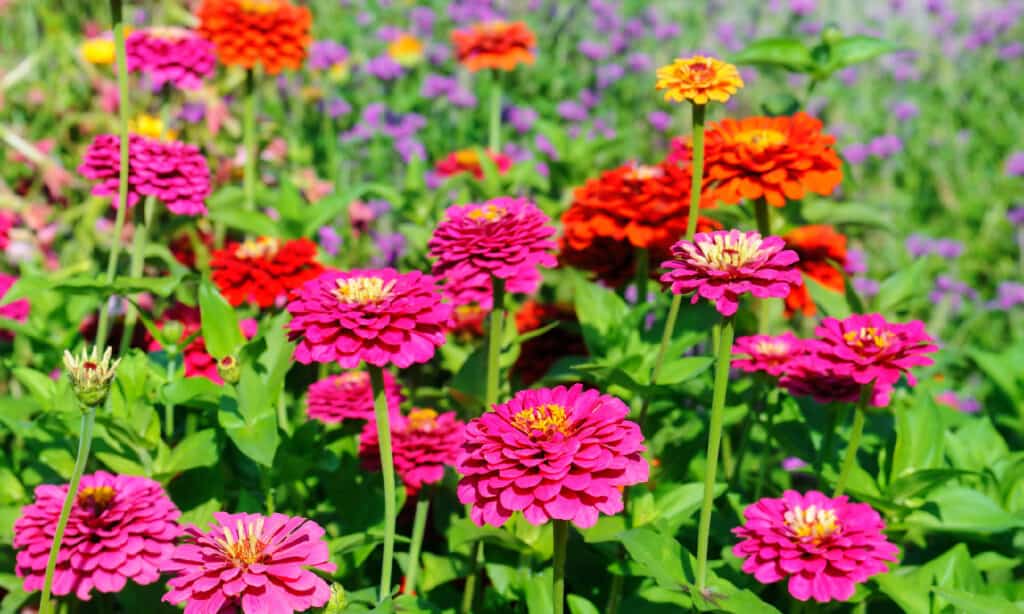
Tall and colorful zinnias benefit from underplanted marigolds.
©iStock.com/AlinaMD
9. Pansy
Heart-shaped annual pansies’ color range is hard to beat. They range from white to deepest purple and everything in between, plus stripes and spots too!
Most Vermont gardeners grow container pansies because they’re quite short and look best grouped together. Pansies are tougher than they look, but they need lots of water and fertilizer in a container.
As fall approaches, pansies don’t care. They keep blooming right up until the frost, sometimes even surviving until the second or third freeze in November. This is one of the best annuals you can plant in Vermont at the end of summer and into early fall to keep the pollinators happy.

In Vermont, pretty yet tough pansies flower into November.
©Michkasova Elena/Shutterstock.com
10. Marigolds
Marigolds are one of the easiest annuals to grow, and they’re rightly popular as a result.
These stunning flowers reach three feet tall, depending on the species, and produce large carnation-like flower heads in fiery yellow, orange, and red, but they need full sun to bloom well.
These golden beauties cope well with drought and bloom almost endlessly until late fall. Did you know that marigolds are excellent companion plants for tomatoes and cucumbers? Aphids don’t like their scent, but the bees do. Marigolds are win-win flowers. Everyone should grow marigolds.
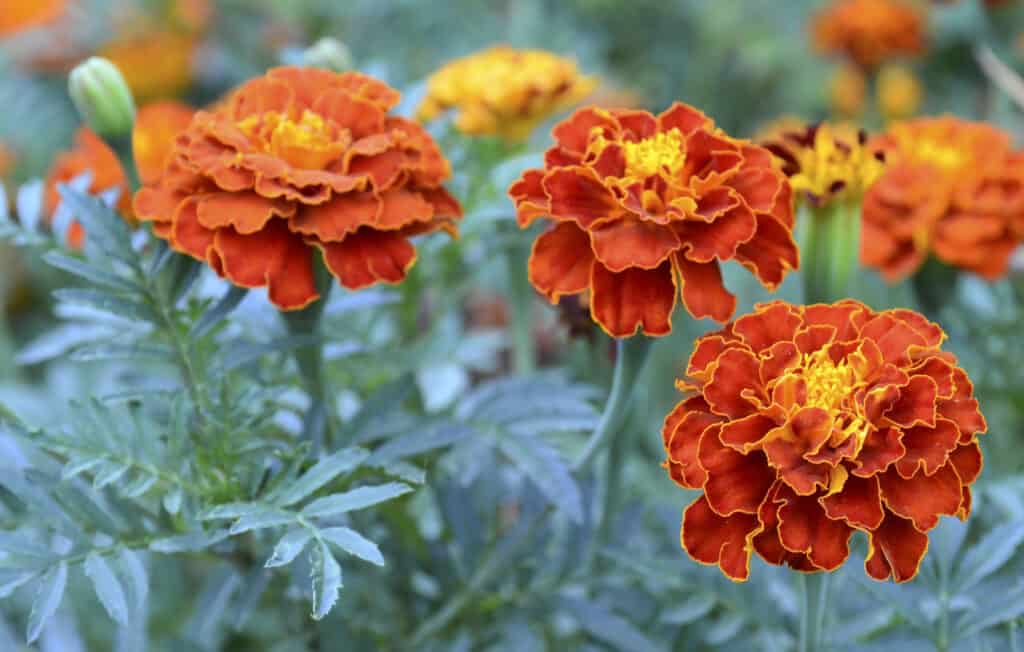
Golden marigolds repel aphids and protect tomato crops from infestation.
©iStock.com/svf74
11. Begonia
Are you a Vermont gardener with a shady garden? Begonias are your new annual best friend. This tuber prefers a shady lifestyle and does best in a sheltered position. It’s because their thick foliage and petals easily develop sunburn.
Although tropical begonias prefer a lightly shaded spot, they still need warmth. Plant tubers out in late spring after the frost has gone and the soil has started to warm up. Thick, dark green foliage emerges first, followed by pink, red, coral, orange, yellow, and purple pollinator-magnet blooms.
In the fall, dig up your begonia tubers and stash them somewhere dry, cool, and dark for winter. They’ll regrow next year when the sun returns to Vermont.

Tropical begonias prefer a part-shaded spot because too much sun burns their fleshy foliage.
©Fedotova Olga/Shutterstock.com
12. Celosia
Fluffy fox-tail celosia is something a bit different in an annual flower garden. These African and Asian natives produce a tall spike with a fluffy hot pink, yellow, or white bloom atop it!
Celosia loves heat, so you can’t plant them before May in Vermont. Wait for the soil to warm up, then place them in a sunny, well-drained spot. It’ll take around a month for the vivid flowers to bloom from plug plants.
Keep them watered in dry spells and apply liquid fertilizer to container-grown celosia to keep their blooms in tip-top shape. Deadhead old brown flowers and new ones appear like magic.
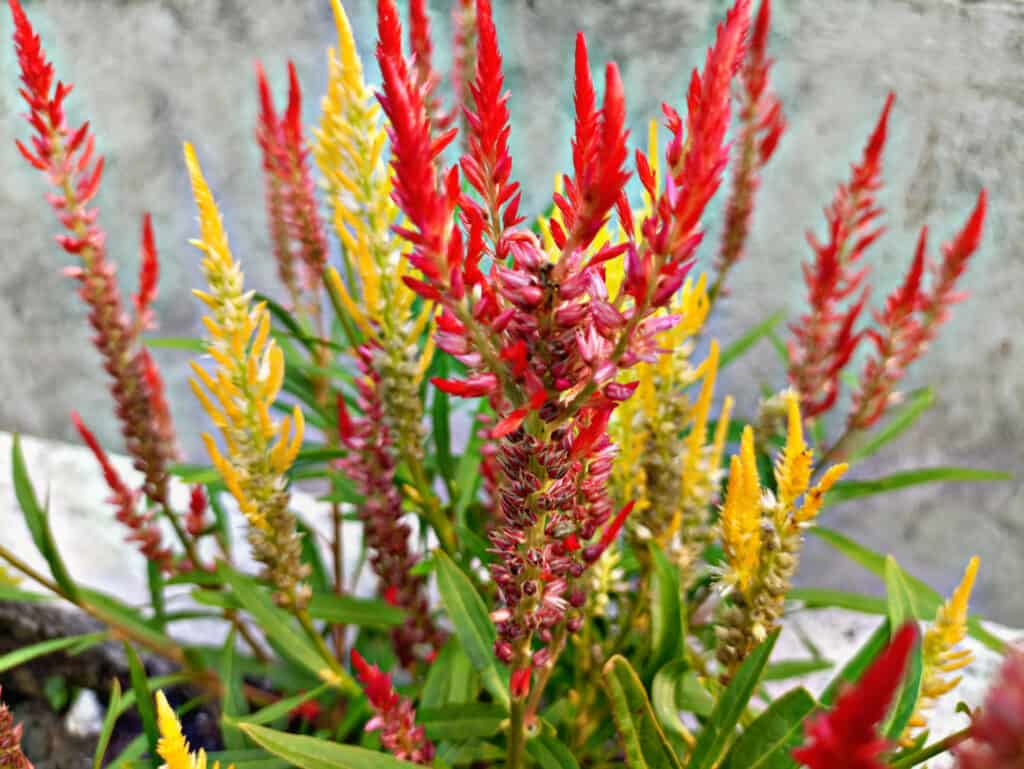
Fluffy celosia produce a fox tail flower atop a thin stem.
©iStock.com/Khodar Adi Handoko
13. Viola
Annual violas need full sun in Vermont. If they receive lots of warmth and light, their red, yellow, blue, purple, white, and bicolor petals gleam and attract small pollinators to their nectar banks.
Grow violas in fertile, humus-rich soil that drains well and water them regularly in drought spells. These pretty little annual flowers suit hanging baskets, rock gardens, containers, and pathways edges, plus you can use their dried petals to make pictures and pop them on cupcakes too.
Cheerful violas bloom in midsummer and die off in frosty November. Their flowers bloom freely if they’re regularly deadheaded and watered, but they tend to self-seed everywhere. Some folks love these free plants, but it’s best to deadhead them early on if you want to contain violas.
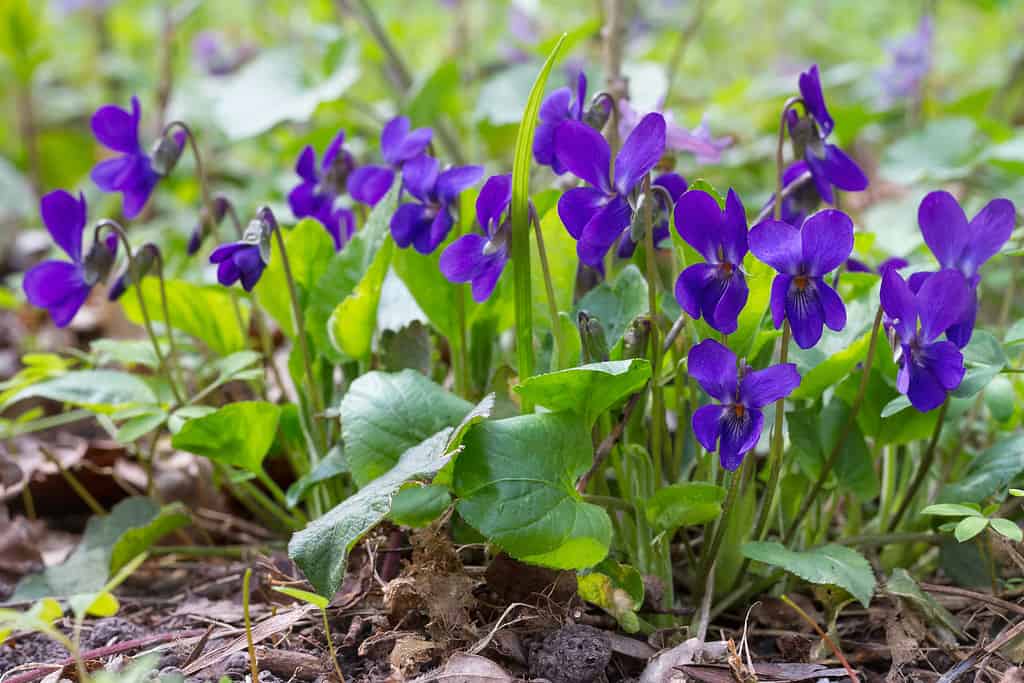
Pretty little violas suit a sunny rockery or well watered hanging basket.
©rustamank/Shutterstock.com
14. Impatiens
Shade-loving impatiens fill a dull spot in Vermont with bright colors and require very little effort.
As well as filling boring shady spots with life, impatiens cope with light frost, so they’re one of the few Vermont annuals that can head outside early in late March or early April and keep blooming into late November.
In zones 7 and above, impatiens bloom year-round, but in Vermont, they die off when heavy frosts arrive. No matter. They are easy to grow from seed on a sunny window sill or cheap to purchase in trays from a garden center.
Whether sited in a shade or part-shade, impatiens need water. When their soil dries out, they stop flowering, wilt, and struggle to start up again. However, they don’t require deadheading. You win some, you lose some!

In Vermont, thirsty impatiens bloom from early April until November’s harsh frost.
©John R Martin/Shutterstock.com
Thank you for reading! Have some feedback for us? Contact the AZ Animals editorial team.








